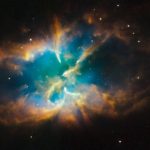An international team of astronomers has pioneered a technique that converts two-dimensional radio images into three-dimensional models, offering a new perspective on cosmic structures. This advancement promises to enhance the understanding of galaxy formations, black hole dynamics, and other celestial phenomena. By leveraging polarized radio light and accounting for magnetic field interactions, the researchers aim to unlock deeper insights into the universe’s complex mechanisms.
Previous approaches primarily depended on multiple 2D projections to interpret spatial arrangements, often resulting in uncertain and incomplete representations of astronomical objects. The current methodology addresses these challenges by providing a more precise and comprehensive 3D visualization, thereby improving the accuracy of cosmic structure analyses.
How Does the New Technique Work?
The team utilized polarized radio light, which vibrates in specific directions, and incorporated the Faraday rotation effect. This effect causes the polarization of light to rotate in proportion to the magnetic fields it encounters. By analyzing how much the radio waves have rotated, the researchers could estimate the distance each part of the radio light has traveled, enabling the creation of detailed 3D models of cosmic phenomena millions of light-years away.
What Tools Did Researchers Use?
Data was collected using the Australian Square Kilometer Array Pathfinder Telescope (ASKAP) and the MeerKAT radio telescopes. These instruments provided high-resolution radio images that, when processed with the new technique, allowed for the reconstruction of three-dimensional pseudo3D cubes. The enhanced sensitivity and speed of these telescopes were crucial in obtaining the necessary data for accurate modeling.
What Are the Implications for Future Astronomy?
The ability to visualize cosmic structures in three dimensions opens new avenues for understanding the physics governing the universe. For instance, the team successfully applied their technique to study the supermassive black hole at the center of the M87 galaxy, revealing interactions between ejected materials and cosmic winds. This method is expected to be invaluable for analyzing data from upcoming projects like the Square Kilometer Array (SKA-Phase2), which will significantly expand the capabilities of radio astronomy.
“We found that the shapes of the objects were very different from the impression that we got by just looking at them in a 2D space. Our technique has dramatically altered our understanding of these exotic objects. We may need to reconsider previous models on the physics of how these things work. There is no question in my mind that we will end up with lots of surprises in the future that some objects will not look like we thought in 2D.”
This innovative approach not only enhances the visualization of existing cosmic data but also sets the stage for future discoveries. By enabling more accurate models, scientists can better test and refine theories about the formation and behavior of celestial bodies. Additionally, educational tools and simulations based on these 3D models could provide more immersive learning experiences for students and the public.










